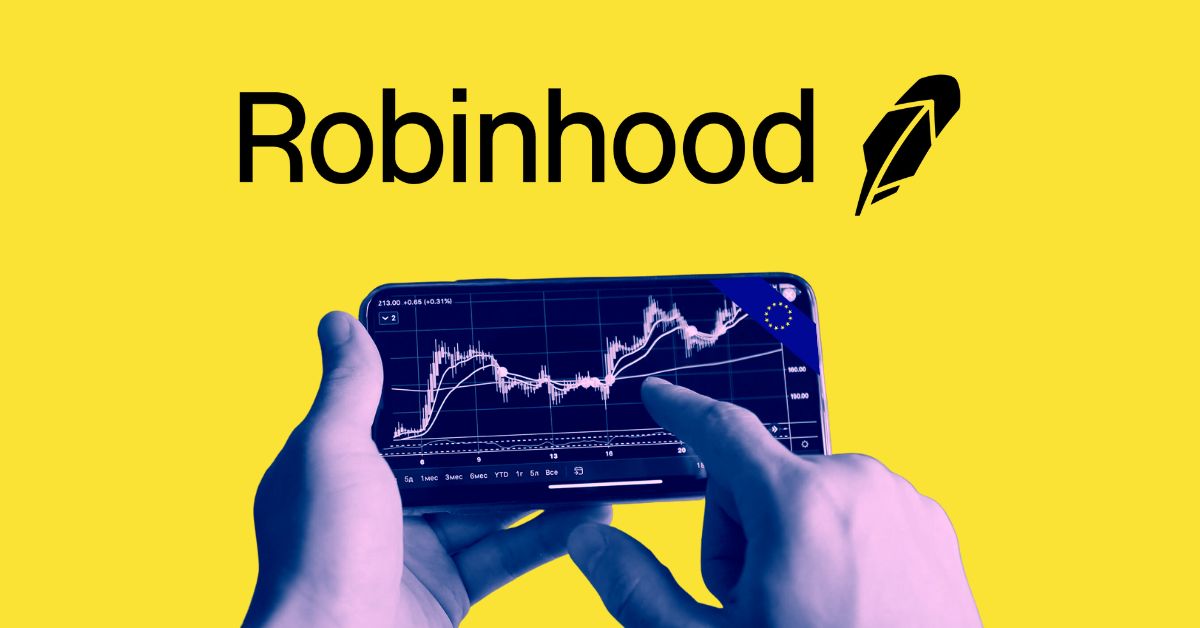Robinhood’s Q1 Performance: A Deep Dive
Introduction
In the ever-evolving landscape of financial markets, Robinhood has emerged as a key player, particularly among retail traders. The company’s recently released Q1 earnings report offers a fascinating glimpse into its performance, highlighting both impressive growth and significant challenges. This analysis will explore the key aspects of Robinhood’s Q1 earnings, focusing on revenue breakdown, market outlook, and strategic initiatives.
Revenue and Earnings Overview
Robinhood’s Q1 earnings report reveals a robust financial performance, with revenues reaching $927 million. This figure not only surpassed Wall Street’s estimates of $921.7 million but also marked a 50% year-over-year (YoY) increase. This substantial growth is a testament to Robinhood’s ability to leverage market volatility and the increasing appetite for trading among retail investors.
The earnings per share (EPS) also exceeded expectations, coming in at $0.37 compared to the forecasted $0.33. This outperformance indicates that Robinhood is effectively monetizing its user base and capitalizing on the dynamic trading environment. The company’s ability to generate such impressive earnings amidst market fluctuations underscores its strategic acumen and operational efficiency.
Segment Breakdown and Market Outlook
Cryptocurrency Revenue
One of the standout performers in Robinhood’s Q1 earnings was its cryptocurrency segment, which generated $252 million in revenue. This represents a 100% increase from the same period last year, although it did see a decline from the previous quarter. The surge in crypto trading activity can be attributed to the heightened volatility in the crypto market, particularly with Bitcoin. This volatility has attracted a significant number of traders seeking to capitalize on price fluctuations, thereby boosting Robinhood’s crypto revenue.
However, the decline from the previous quarter suggests that the crypto market’s volatility is not always predictable. This underscores the need for Robinhood to diversify its revenue streams to mitigate the risks associated with reliance on a single, volatile market segment.
Options and Equities Revenue
Options revenue saw a significant boost, increasing by 56%. This growth indicates a growing interest in options trading among Robinhood’s user base. Equities revenues also surged by 44%, reflecting a strong performance across multiple trading segments. The increase in options and equities revenue highlights the platform’s appeal to a diverse range of traders, from those seeking speculative opportunities to those looking for more traditional investment avenues.
Net interest revenues, primarily from margin investing, jumped 14% to $290 million. This growth underscores the increasing importance of margin trading to Robinhood’s revenue model. Margin trading allows users to leverage their investments, potentially amplifying their returns. However, it also comes with higher risks, which Robinhood must manage carefully to maintain user trust and engagement.
Transaction-Based Revenue
Transaction-based revenue was $583 million, down from $672 million in Q4 but up from $329 million a year before. This fluctuation reflects the seasonal and market-driven nature of trading volumes. The decrease from Q4 to Q1 is not uncommon, as trading activity often slows down at the beginning of the year. However, the YoY increase indicates a long-term growth trend, driven by the increasing popularity of retail trading.
Strategic Initiatives and Future Outlook
In response to its strong Q1 performance, Robinhood authorized a $500 million increase in its stock buyback program, bringing the total to $1.5 billion. This move is aimed at returning value to shareholders and signaling confidence in the company’s future prospects. Stock buybacks can boost share prices by reducing the number of outstanding shares, thereby increasing earnings per share. This initiative demonstrates Robinhood’s commitment to enhancing shareholder value and its optimism about future growth.
Additionally, Robinhood’s CEO has indicated plans to diversify beyond crypto, recognizing the need to mitigate risks associated with the volatile crypto market. Diversification can help Robinhood build a more resilient revenue model, less susceptible to the fluctuations of a single market segment. By expanding its offerings and attracting a broader range of users, Robinhood can enhance its long-term sustainability and growth prospects.
Challenges and Areas for Improvement
Despite the positive earnings report, Robinhood faced some challenges in Q1. The company missed estimates for monthly active users, which could impact long-term user engagement and revenue growth. Monthly active users are a critical metric for Robinhood, as they directly influence trading volumes and, consequently, revenue. A decline in this metric suggests a need to focus on user acquisition and retention strategies.
Moreover, the average revenue per user (ARPU) fell to $145 from $164 in the previous quarter, although it still showed a 39% YoY increase. This decline in ARPU suggests that while Robinhood is attracting more users, it may not be monetizing them as effectively as before. This could be due to increased competition or changes in user behavior. To address this, Robinhood may need to enhance its value proposition, offering more attractive features and services to increase user engagement and spending.
Conclusion
A Promising Future Amidst Volatility
Robinhood’s Q1 earnings report paints a picture of a company navigating the complexities of a volatile market with resilience and strategic foresight. The significant growth in crypto revenue, coupled with strong performance in options and equities, underscores the platform’s appeal to a diverse range of traders. While challenges remain, particularly in user engagement and revenue per user, Robinhood’s initiatives to diversify and return value to shareholders position it well for future growth.
As the financial markets continue to evolve, Robinhood’s ability to adapt and innovate will be crucial in sustaining its momentum and achieving long-term success. The company’s strategic initiatives, such as the stock buyback program and plans for diversification, demonstrate its commitment to growth and sustainability. By addressing the challenges it faces and capitalizing on its strengths, Robinhood can continue to thrive in the dynamic world of retail trading.

